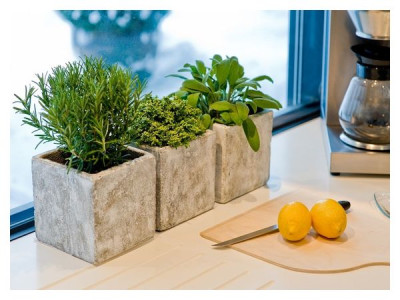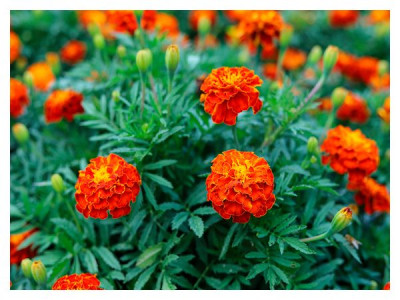Platycodon is a beautifully flowering perennial, perfectly adapted to our climate. Thanks to its high frost resistance, it successfully survives even harsh winters, which allows it to decorate our areas for many years. Before blooming, the plant decorates the garden with buds that look like inflated balloons. Bell-shaped flowers open in early summer. Find out when to sow platycodon and how to grow it so that it becomes the most beautiful plant in your garden.

Platycodon grandiflorus is not as popular among gardeners as other ornamental plants such as hydrangea, phlox, peonies or roses. However, like these species, it creates an interesting accent in the flower garden.
Its advantage lies not only in its attractive appearance, but also in its excellent adaptation to our climate. Platycodon is absolutely resistant to low temperatures. It does not need additional shelter and easily tolerates winter frosts. Another advantage is the trouble-free cultivation of platycodon - even novice gardeners can handle it.
Platycodon - a beautiful flowering perennial

Platycodon grandiflora is an interesting perennial plant, the main advantage of which is its beautiful and long-lasting flowering. Native to eastern Asia, this perennial can reach a height of 20 to 80 cm depending on the variety.
Broadbell is distinguished by its compactness and light green leaves, which often have a slightly blue tint. Glabrous, bluish-green stems emerge from lanceolate or oval leaves with jagged edges. In early summer, flower buds appear on tough, erect stems. They look like inflated multi-colored balloons and are visible from afar.
Platycodon blooms in summer. It starts in June or July and ends only in September. This perennial is a beautiful addition to the garden for weeks as its flowers are very showy. The flowers that appear are in the form of large bells (they can reach 8 cm in diameter!) and have a wide variety of colors.
In the garden you can grow platycodon with white, light pink, blue or deep blue flowers. They consist of five pointed wide petals.
Growing platycodon from seedlings and seeds
Regardless of the propagation method and the plant, please note that platycodon cannot be replanted because its roots are very fragile. It can be grown in the same place for more than 10 years. Choose a sunny location with fertile, light soil.
Growing platycodon from seedlings

You can start growing platycodon by planting ready-made seedlings in the garden (in the second half of May). Young plants in containers can be easily purchased at gardening stores. But it’s not difficult to grow seedlings from seeds yourself:
- Sow purchased or collected platycodon seeds in March-April in a common container. Use universal soil for seedlings. The seeds should be covered with a thin layer of soil.
- After sowing, spray the seedlings with settled water, cover with plastic wrap and place in a bright room with a temperature of +20...+22°C. After the sprouts appear, remove the film.
- From time to time, ventilate the seedlings and water them with water, maintaining constant soil moisture.
- When 2-3 leaves appear on the seedlings, transplant them into larger pots.
- Place the seedlings in a bright place and water moderately.
- Platycodon seedlings should be planted in open soil in the last days of May or the first days of June, when you are sure that the night frosts have ended.
- The distance between plants is 25-30 cm.
Growing platycodon by sowing seeds in open ground
If you do not want to prepare seedlings, you can sow platycodon seeds directly in open ground (but experts still recommend growing seedlings):
- The right time to sow seeds in the soil in the garden is May.
- Dig up and level the flowerbed.
- Sow platycodon seeds shallowly.
- After germination, the seedlings can be transplanted.
- Flowering can be expected next year.
Caring for platycodon: the most important rules

Platycodon is an undemanding perennial that rarely gets sick and is only occasionally attacked by pests. It does not require excessive care - without additional treatments it is a beautiful garden decoration for many years.
All this makes the grandiflora broadbell an excellent option for novice gardeners who do not have much experience working with ornamental plants. However, if you want the plant to take root well, there are a few rules to keep in mind.
- The soil. Platycodons grow and bloom best in light, permeable soil rich in nutrients. Soil with a neutral pH level is suitable. The plant is harmed by heavy, waterlogged soils, which lead to rotting of its roots.
- Location. This plant does best in warm, sunny locations but will do well in partial shade. The plant should not be planted in complete shade.
- Watering. When growing platycodon, keep the soil moderately moist. It is worth remembering that an excess of moisture can harm the plant more than temporary dryness, since it is capable of accumulating water in the roots. Water the plant especially often during drought.
- Fertilizer. Large-flowered platycodons respond well to organic fertilizers such as manure and compost. They react poorly to intensive feeding with concentrated preparations.
- Reproduction. The easiest way to propagate this plant is to collect seeds from mature seed pods in the fall. At the right time, they can be sown as seedlings or directly into the ground.
- Diseases and pests. This plant is usually not susceptible to diseases or pests, although it can become a victim of slugs.
- Overwintering and frost resistance. Platycodons are absolutely frost-resistant and can overwinter in the ground without shelter.
When growing large-flowered platycodons, you should not forget to remove faded inflorescences. This simple measure will encourage the plant to continue flowering.
Platycodon - application in landscape design

The beautiful large-flowered Platycodons, with their compact, dense crown and bright flowers, have many interesting uses in the garden:
- They can be planted in rockeries and borders where they will get enough sunlight. Dwarf varieties are especially suitable for such locations.
- On the other hand, tall platycodons are best planted in multi-species flower beds. They will create attractive arrangements with other perennials that bloom pastel colors in the summer.
- The broadbell grandiflora is also ideal as a cut flower.
- Platycodon is suitable for growing in containers on a balcony or terrace.

All bell lovers will definitely like this plant!)









Write a comment